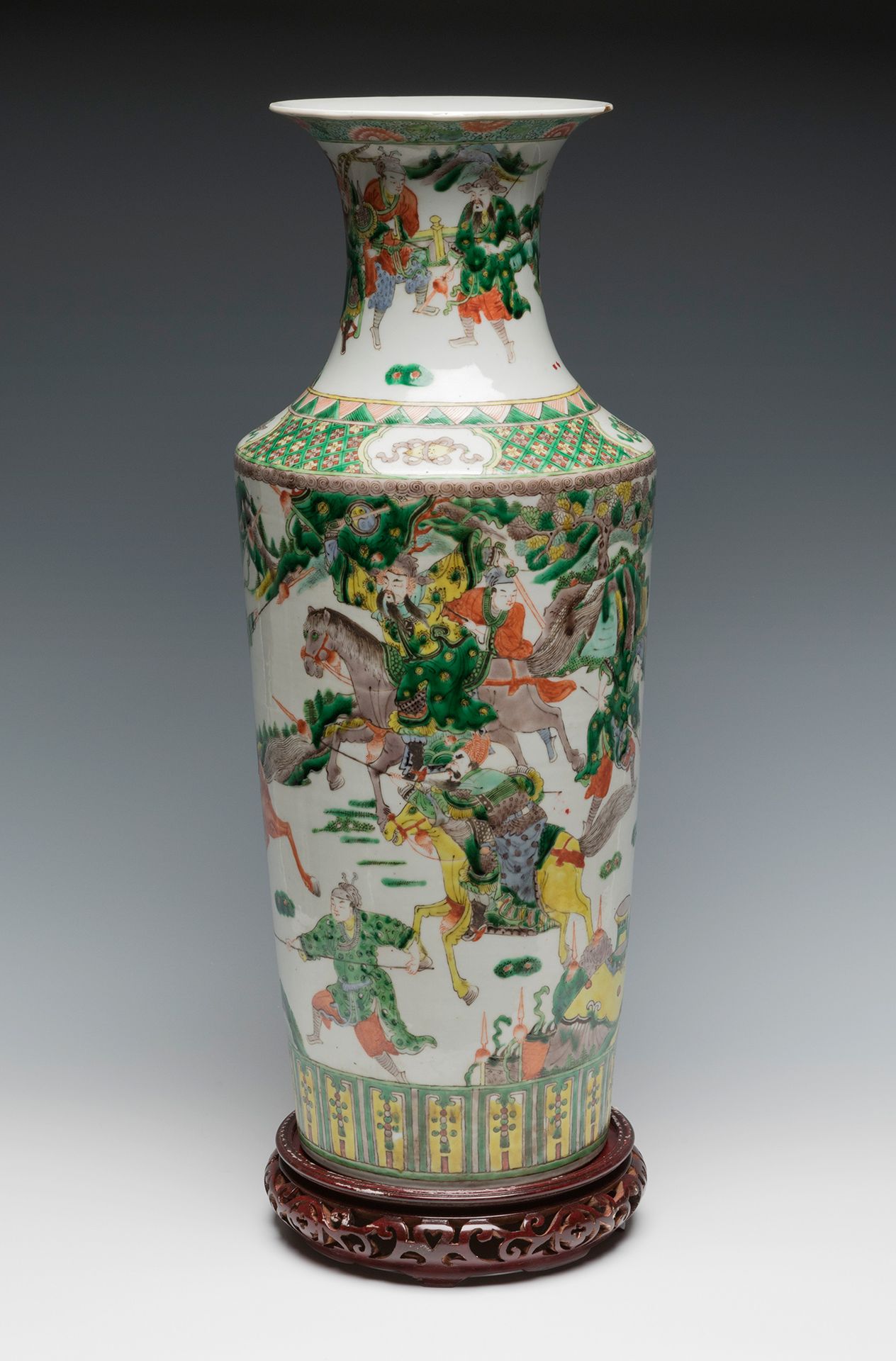Description
Chinese Wukai vase, Qing dynasty, Kangxi period. First quarter of the 18th century. Hand-painted porcelain. Slightly chipped and hair on the mouth. Seal on the reverse. Measurements: 60 cm (height); 24 cm (largest diameter). Wukai porcelain vase from the "Green Family" of the Kangxi period (1662-1722), with circular forms, elongated neck and open circular mouthpiece. Hand-painted with scenes of warriors, plant decorations and borders. The Kangxi Emperor was a great promoter and patron of the porcelain industry. It was during his rule that the ailing industry received a major revival. The artistic achievements made between the late 17th and early 18th centuries place these pieces among the finest in history. Wucai or Wu tsai porcelain for export, produced by folk kilns during the Kangxi period, has historically been referred to by Westerners as "green family porcelain". This name was given by Albert Jacquemart in the book Historie artistique, industrielle et commerciale de la porcelain, Paris 1862, to denote a group of wares where the green glaze presents a certain leadership in the decorative composition. The term 'famille verte' sometimes refers to a range of wares which, in the opinion of Chinese experts, is often erroneous. Wucai porcelain of the Kangxi period is a type of porcelain produced between the late 17th and early 18th centuries, the distinctive feature of which is a polychrome decoration based on the use of low-temperature glazes of various colours.
10
Chinese Wukai vase, Qing dynasty, Kangxi period. First quarter of the 18th century. Hand-painted porcelain. Slightly chipped and hair on the mouth. Seal on the reverse. Measurements: 60 cm (height); 24 cm (largest diameter). Wukai porcelain vase from the "Green Family" of the Kangxi period (1662-1722), with circular forms, elongated neck and open circular mouthpiece. Hand-painted with scenes of warriors, plant decorations and borders. The Kangxi Emperor was a great promoter and patron of the porcelain industry. It was during his rule that the ailing industry received a major revival. The artistic achievements made between the late 17th and early 18th centuries place these pieces among the finest in history. Wucai or Wu tsai porcelain for export, produced by folk kilns during the Kangxi period, has historically been referred to by Westerners as "green family porcelain". This name was given by Albert Jacquemart in the book Historie artistique, industrielle et commerciale de la porcelain, Paris 1862, to denote a group of wares where the green glaze presents a certain leadership in the decorative composition. The term 'famille verte' sometimes refers to a range of wares which, in the opinion of Chinese experts, is often erroneous. Wucai porcelain of the Kangxi period is a type of porcelain produced between the late 17th and early 18th centuries, the distinctive feature of which is a polychrome decoration based on the use of low-temperature glazes of various colours.
